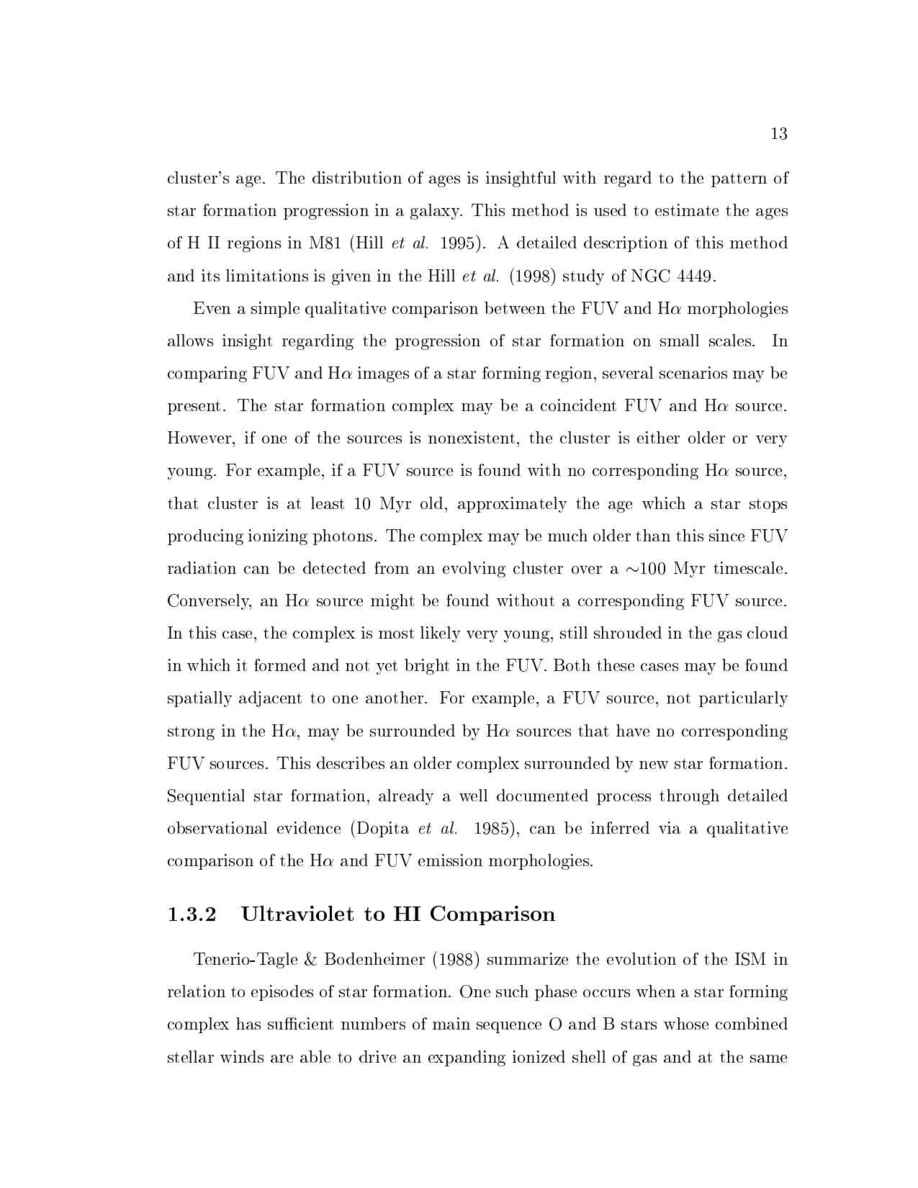
13
cluster's age. The distribution of ages is insightful with regard to the pattern of
star formation progression in a galaxy. This method is used to estimate the ages
of H II regions in M81 Hill
et
al.
1995. A detailed description of this method
and its limitations is given in the Hill
et
al.
1998 study of NGC 4449.
Even a simple qualitative comparison between the FUV and H morphologies
allows insight regarding the progression of star formation on small scales. In
comparing FUV and H images of a star forming region, several scenarios may be
present. The star formation complex may be a coincident FUV and H source.
However, if one of the sources is nonexistent, the cluster is either older or very
young. For example, if a FUV source is found with no corresponding H source,
that cluster is at least 10 Myr old, approximately the age which a star stops
producing ionizing photons. The complex may be much older than this since FUV
radiation can be detected from an evolving cluster over a
100 Myr timescale.
Conversely, an H source might be found without a corresponding FUV source.
In this case, the complex is most likely very young, still shrouded in the gas cloud
in which it formed and not yet bright in the FUV. Both these cases may be found
spatially adjacent to one another. For example, a FUV source, not particularly
strong in the H , may be surrounded by H sources that have no corresponding
FUV sources. This describes an older complex surrounded by new star formation.
Sequential star formation, already a well documented process through detailed
observational evidence Dopita
et
al.
1985, can be inferred via a qualitative
comparison of the H and FUV emission morphologies.
1.3.2 Ultraviolet to HI Comparison
Tenerio-Tagle & Bodenheimer 1988 summarize the evolution of the ISM in
relation to episodes of star formation. One such phase occurs when a star forming
complex has su cient numbers of main sequence O and B stars whose combined
stellar winds are able to drive an expanding ionized shell of gas and at the same
